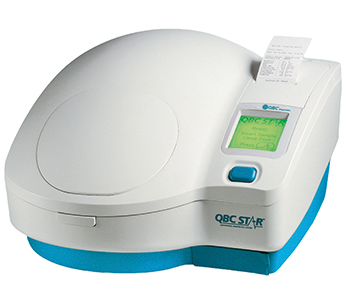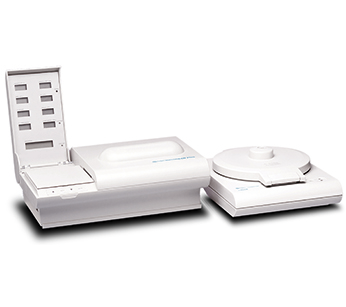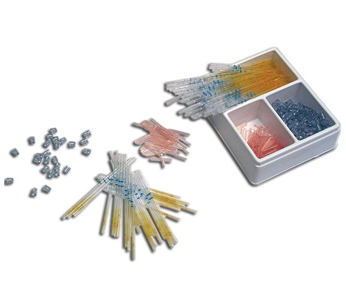QBC Haematology
What Is Dry Haematology?
Do All Haematology Analysers Use the Same Basic Methodology?
Dry Haematology is a unique means of performing a complete blood count analysis without the need for liquid reagents used by other conventional haematology analysers. In traditional wet haematology, a blood sample is mixed with a stream of liquid reagents which dilute and lyse (break apart) the cells in order to analyse their composition. In dry haematology, a precisely constructed sample collection tube is internally coated with EDTA and acridine orange. This tube is then filled with a small amount of whole blood and mixed with the dry reagents, allowing them to effectively bond with and stain unique proteins within the cells of the blood. When this sample is then exposed to a particular wavelength of light, the stained enzymes will begin to glow and fluoresce. The analyser then measures the volume of these cells to determine the sample’s composition.
How Does Dry Haematology Compare to Traditional Haematology?
Minimal System Maintenance – Since dry haematology allows all reagents to be housed within the disposable sample collection tube, required maintenance and upkeep to the analyser is kept to a minimum. With dry haematology there is no need for decontamination, replacement of filters or tubes and no cleaning of reagent wells. Simply throw away the disposable and give the analyser an occasional wipe down.
Extended Shelf Life – Dry haematology reagents have a drastically longer shelf life than liquid reagents. While most liquid reagents only last for a few weeks after opening, dry haematology reagents hold their integrity for over a year, meaning there’s no rush to run samples before your reagents expire.
Ease of Storage – By housing all necessary reagents within the sample collection device, dry haematology saves laboratories half the disposable inventory space used with conventional analysers. Plus, dry haematology reagents are far less sensitive to storage conditions than liquid reagents, allowing for a far wider range of inventory settings than their liquid counterparts.
Dry haematology analysers provide several advantages over traditional wet haematology analysers. Dry haematology reagents are generally less volatile, easier to store, and have a much longer shelf life than liquid reagents. Additionally, since dry haematology allows all reagents to be housed within the disposable sample collection device, required maintenance and upkeep to the analyser is kept to a minimum. In short, dry haematology is a great choice for anyone looking to simplify their on-site complete blood count testing.
Please select one of the QBC Europe products below to find out more.
| QBC STAR Point of Care Haematology System |  |
| QBC Autoread Plus Haematology System |
|
| QBC Tubes |
|



